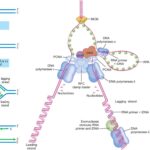IGCSE Biology 116 Views 1 Answers
Sourav PanLv 9November 14, 2024
Explain the relative thickness of: (a) the muscle walls of the left and right ventricles (b) the muscle walls of the atria compared to those of the ventricles
Explain the relative thickness of: (a) the muscle walls of the left and right ventricles (b) the muscle walls of the atria compared to those of the ventricles
Please login to save the post
Please login to submit an answer.
Sourav PanLv 9May 15, 2025
The thickness of the heart’s muscle walls varies significantly among its chambers, reflecting their distinct functions in the circulatory system. Here’s a detailed explanation of the relative thickness of the muscle walls in the left and right ventricles, as well as the atria compared to the ventricles.
(a) Thickness of the Muscle Walls of the Left and Right Ventricles
- Left Ventricle:
- The left ventricle has a much thicker muscular wall compared to the right ventricle, typically measuring about 10 to 15 mm in thickness. This thickness is essential because the left ventricle is responsible for pumping oxygenated blood throughout the entire body, which requires generating high pressure to overcome systemic vascular resistance.
- Right Ventricle:
- The right ventricle has a thinner muscular wall, generally around 3 to 5 mm thick. Its primary function is to pump deoxygenated blood to the lungs for oxygenation, which occurs at a lower pressure due to the shorter distance and lower resistance in the pulmonary circulation compared to systemic circulation.
- Ratio of Thickness:
- The typical ratio of left ventricular wall thickness to right ventricular wall thickness is approximately 3:1 in adults. This difference is attributed to the higher workload and pressure requirements placed on the left ventricle during systole (contraction) as it pumps blood throughout the body.
(b) Thickness of the Muscle Walls of Atria Compared to Those of Ventricles
- Atria:
- The walls of both the right and left atria are significantly thinner than those of the ventricles, typically measuring around 2 to 3 mm in thickness. The atria’s primary role is to receive blood returning from the body (right atrium) and lungs (left atrium) and to push it into the ventricles. This process requires less muscular force and therefore results in thinner walls.
- Comparison with Ventricles:
- The ventricles have much thicker walls than the atria because they need to generate strong contractions to pump blood effectively out of the heart. The thicker muscle allows for greater force generation, which is essential for overcoming vascular resistance during blood ejection.
Summary Table
| Chamber | Wall Thickness (mm) | Function |
|---|---|---|
| Left Ventricle | 10-15 | Pumps oxygenated blood throughout the body |
| Right Ventricle | 3-5 | Pumps deoxygenated blood to the lungs |
| Left Atrium | 2-3 | Receives oxygenated blood from lungs |
| Right Atrium | 2-3 | Receives deoxygenated blood from body |
0
0 likes
- Share on Facebook
- Share on Twitter
- Share on LinkedIn
0 found this helpful out of 0 votes
Helpful: 0%
Helpful: 0%
Was this page helpful?




